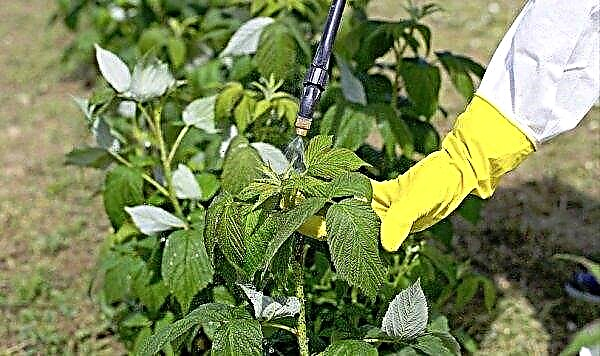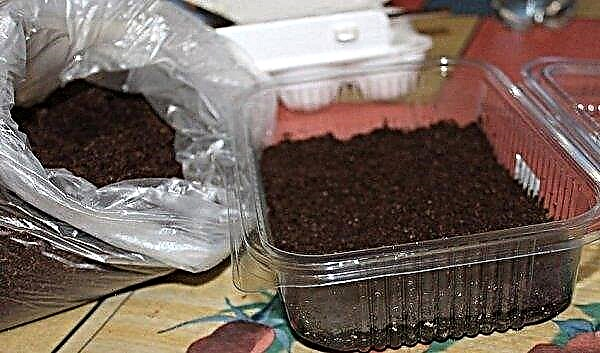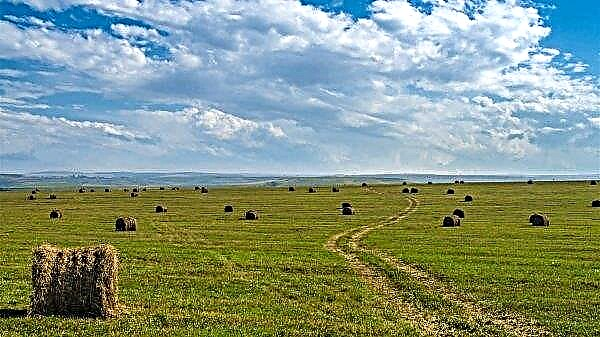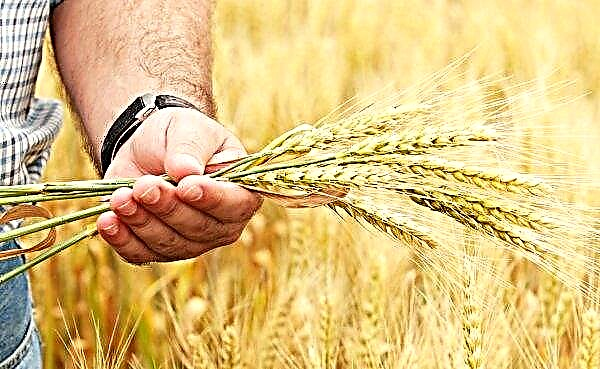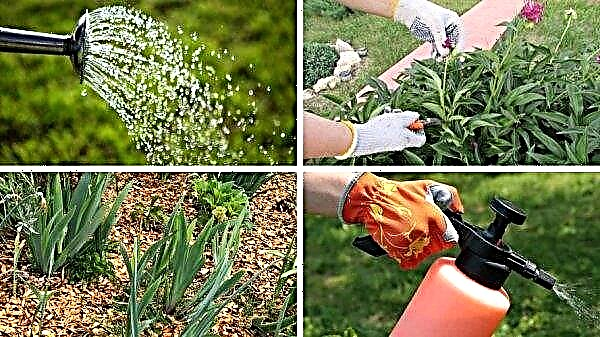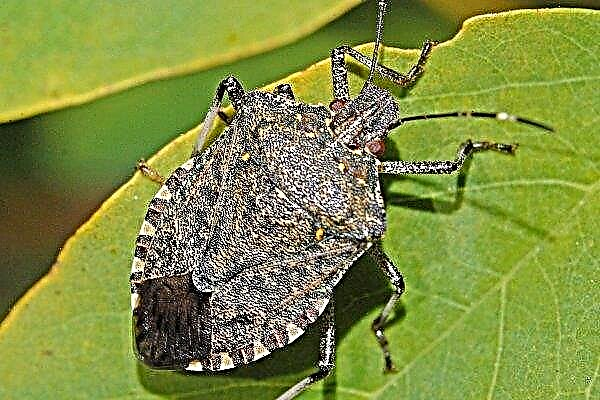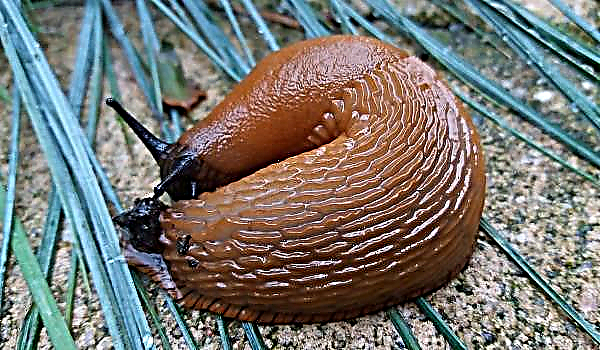At the height of summer, a shortage of onions is often found, which is the most important ingredient in most dishes. This is due to the fact that the previous onion crop is coming to an end, and the new one has not yet ripened. The problem is successfully solved by winter onions, which will be described later.
Features of planting winter onions
The main feature of planting winter onions is the need to use only winter-hardy varieties that can withstand the cold during wintering in the open.
Did you know? Europe owes America the emergence of many valuable crops - tomatoes, potatoes, corn, peppers, sunflowers. However, in exchange for America from Europe, Christopher Columbus brought in onions, which were previously absent there.
The best varieties
During many years of use, the following onion varieties have shown their best winter-hardiness:
- Robin, which, being a hybrid specially bred for winter cultivation in the southern regions, is distinguished by the red flesh of its bulbs;

- Mouzon, medium early variety, ripening for 90-110 days;
- Siberian precociouswhose ripening period is only 70 days;
- Ruby, also characterized by early maturity, which is extremely important for winter varieties, which fits into 80 days;

- Panther F1characterized by high cold resistance and minimal tendency to shoot;

- Luganskrelating to late-ripening varieties and characterized by excellent keeping quality and good productivity;

- Black Prince, characterized by dark purple pulp and good keeping quality;
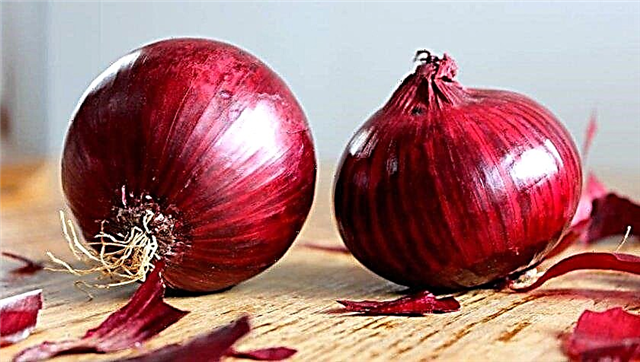
- Burancharacterized by universality of application and long-term storage;
- Tamara F1, which is a mid-early hybrid with high productivity and good taste.
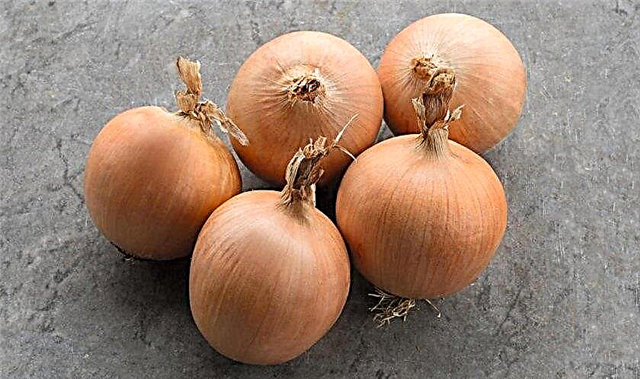
Optimal conditions
In addition to the proper selection of winter onion varieties, the choice of the optimal period is crucial for winter planting. Autumn planting times vary greatly in different regions with different climatic conditions. To tie the required period to local conditions, it is necessary to proceed from the requirement that prescribes to plant a vegetable a month before the onset of a stable cold season.
Important! The success of winter onion cultivation is guaranteed provided that before the onset of cold weather the vegetable has time to form complete roots, but has not yet begun to produce green shoots.
Experienced growers synchronize this rule with the readings of an external thermometer. If for several days in a row it shows a temperature that does not rise above + 5 ° C - it means it's time to plant a vegetable. Most often, onions are planted before winter, starting in mid-October and ending in early November. Planting it after the onset of stable frost does not make sense, since this will lead to guaranteed death of the bulbs.
How to plant onions in the winter
Planting onion planting material in the winter is different from spring planting.
Site selection and preparation
The best place for winter planting of this vegetable is a plot oriented to the south or south-west and as much as possible protected from the effects of wind. Onions require well-drained fertile soil in the form of humus loam or humus-sandy soil.
In addition, the not very strong root system of this vegetable also needs additional top dressing, which, when digging the soil in the autumn, enriches it with humus at the rate of 5 kg per 1 sq. M. m and mineral fertilizers represented by potassium salt (15 g per 1 sq. m) and superphosphate (25 g per 1 sq. m). It is also recommended to sprinkle the ground with wood ash at the rate of 10 g per 1 sq. m
Seed preparation
Usually onion planting material is presented:
- oats, which are bulbs with a diameter of less than 10 mm;
- sevk, whose diameter of the bulbs is 10–30 mm;
- onion-sampling, whose diameter exceeds 30 mm.
 Experienced vegetable growers before planting the bulbs in the ground recommend that they be decontaminated with a weak solution of potassium permanganate or vitriol, in which the bulbs should be kept for 10 minutes. After soaking, planting material must be dried within 24 hours.
Experienced vegetable growers before planting the bulbs in the ground recommend that they be decontaminated with a weak solution of potassium permanganate or vitriol, in which the bulbs should be kept for 10 minutes. After soaking, planting material must be dried within 24 hours.Important! The bulbs selected for autumn planting cannot cut their necks.
At what distance and at what depth should the onions be planted
Proper planting of bulbs in the soil helps to grow a large crop. To do this, they are embedded in the soil to a depth of 50 to 80 mm. Depth depends on the size of the bulbs, increasing with their enlargement. The distance from each other also varies from 50 to 100 mm; this differentiation of the distance between the bulbs depends on the purpose of planting. If you plant onions on a feather, then the distance between seedlings is reduced, and when planting for growing turnips, it increases. Between the rows the interval is made more solid, reaching 250 mm.
Landing technology
Before making grooves on the bed for planting planting material, it is well dug, leveled and compacted surface. After planting the bulbs, they are sprinkled with soil and mulched with straw, dry sawdust, humus or spruce spruce branches. Planted winter onions do not require watering. In the absence of precipitation over the next decade, the earth will need to be moistened without forming excess moisture in the bed.
Further care
An onion plant develops best on well-drained light soils and does not tolerate excessive moisture, leading to stagnation of water in the soil. Therefore, if there is a sufficient amount of rainfall, watering should be resorted to only when the topsoil is dried. In hot weather, watering twice a week is sufficient.
Did you know? Workers in greenhouses where green onions are grown do not get the flu, even in the midst of its epidemics.
Much more onions need fertilizing with fertilizers, of which there are 3 during the growing season:
- After the appearance of the first feather in spring, the plant is fed with a mixture of superphosphate, urea and potassium chloride in a ratio of 2: 3: 1 and in an amount of 5 g for every 1 sq. m
- The second top dressing is carried out after 3 weeks by means of a solution of nitrophoska, consisting of 40 g of fertilizer and a bucket of water and introduced in the amount of 5 l per 1 sq. m
- For the third time, top dressing is performed when bulbs reach a diameter of 30 mm. The bed is fertilized with superphosphate, 40 g of which is diluted in 10 liters of water. The resulting mixture is poured soil at the rate of 1 bucket for every 1 square. m
Of the pests, the greatest danger to the onion vegetable comes from:
- onion flies, which is fought with drugs in the form of "Karate", "Actara" or "Spark-Bio";

- aphidsdestroyed by universal insecticides in the form of "Mospilan", "Tanreka", "Actellika", "Inta-Vira;

- tobacco thrips, which is fought through the use of "Zeon", "Karate", "Actara";
- onion moth, for the destruction of which the drugs "Entobacterin", "Lepidocide" or "Bitoxibacillin" are used.

Most often, winter onions suffer from:
- powdery mildew, which is treated with solutions of "Quadris", "Polycarbocin", "Topaz" or 1% copper sulfate and Bordeaux fluid;

- peronosporosis, which is fought with the help of “Thanos”, “Polirama”, “Abiga-Pica”;

- Fusarium, for the prevention and control of which biofungicides are used in the form of “Previkur”, “Maxim”, “Vitaros” or “Trichodermin”;
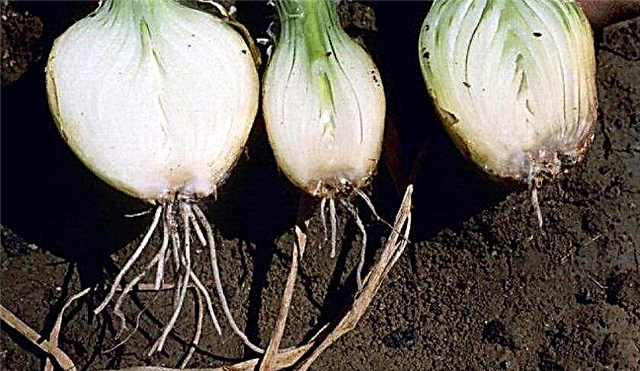
- gray rot of the neck, from which the onion is healed by “Switch”, “Quadrice” or “Bravo”;
- mosaic disease, a cure for which has not yet been developed, but which is prevented by proper agricultural practices and especially competent crop rotation.
Winter onions solve the problem of summer shortages of one of the most popular types of vegetables. Some additional efforts that have to be made when growing it are fully paid off by the presence of a high-quality product in mid-summer.













